How Do Autistic Brains Work?

Understanding the Complex Neural Architecture of Autism
Autism Spectrum Disorder (ASD) affects how brains develop, process information, and communicate. While it is a neurodevelopmental condition with no single feature defining it, recent scientific advances are shedding light on how autistic brains differ structurally, functionally, and molecularly from neurotypical brains. This article delves into the neurological basis of autism, exploring what makes autistic brains unique and how these differences influence behavior, perception, and cognition, ultimately enriching our understanding of this diverse neurodivergent condition.
Structural and Microstructural Brain Differences in Autism
What are the structural and functional differences observed in autistic brains compared to neurotypical brains?
Autistic brains present several structural variations that distinguish them from neurotypical brains. One prominent feature is the increased symmetry between brain hemispheres, which contrasts with the typical lateralization seen in most individuals. In particular, there is a reduced leftward dominance for language processing, indicating a deviation in how language networks are organized.
Further, studies have noted abnormal regional brain volumes. During early childhood, there is often an overgrowth in areas such as the frontal and temporal lobes, especially within the first two years of life. This early overgrowth may contribute to behavioral and sensory differences later observed. As individuals age, some brains show signs of premature shrinkage, particularly before their mid-20s, which is atypical and suggests altered developmental trajectories.
The cortical surface in autistic individuals shows increased folding or gyrification in specific regions, notably the left parietal and temporal lobes, as well as the right frontal and temporal areas. This increased folding influences how neural networks are organized and connected.
Functionally, these structural differences translate into altered neural activity patterns. Autistic brains often exhibit hypoactivation in social and language-related regions, alongside hyperactivation in areas involved in sensory processing. Connectivity patterns are also distinctive: many studies observe reduced long-range neural pathways—known as hypoconnectivity—hindering communication across different brain regions. Conversely, there’s increased connectivity in short-range pathways, which may intensify local processing.
At the molecular level, differences are evident too. Genes involved in inflammation, immune responses, and neural connectivity behave differently, influencing cell development and signaling. For example, research using advanced imaging techniques such as PET scans has confirmed that autistic adults tend to have approximately 17% lower synaptic density across the brain, affecting how neurons communicate.
These combined structural and functional differences impact sensory perception, social interaction, and thought processes characteristic of autism spectrum disorder. They contribute to issues like sensory overload, difficulty in social communication, and the presence of repetitive behaviors. Understanding these distinct brain features helps explain the diversity in autism presentations and highlights the importance of tailored interventions.
Neural Connectivity and Communication Pathways
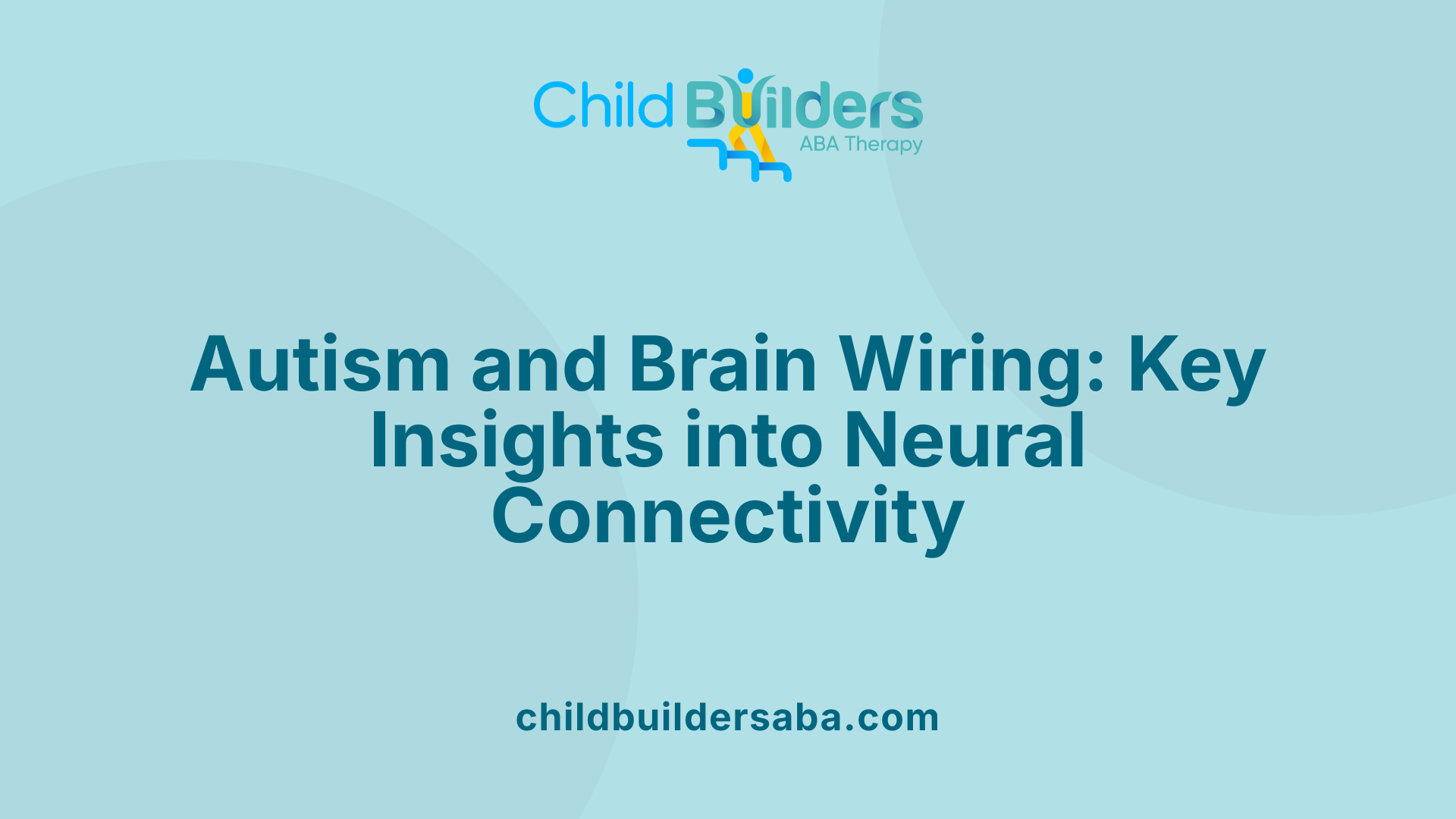
How does autism affect brain development and neurobiology?
Autism influences brain development through a series of complex neurobiological processes that begin early in childhood. It is characterized by atypical growth patterns such as increased brain volume and white matter overgrowth during the first few years of life. Structural brain differences include alterations in cortical organization, with abnormal minicolumns and variations in cortical thickness. These physical changes are linked to disruptions in how different brain regions connect and communicate.
One of the most notable features in autistic brains is the change in neural connectivity. There is generally decreased long-range connectivity, meaning that distant parts of the brain—such as those involved in social understanding, language, and executive functions—tend to communicate less efficiently. Conversely, short-range connections, which are local circuits within brain regions, often show increased connectivity. This imbalance affects how information is transmitted across the brain and influences behavior, cognition, and sensory processing.
These connectivity patterns have significant implications. For example, reduced long-range connectivity can impair social cognition and communication, while hyperfocused local networks may contribute to intense interests or repetitive behaviors characteristic of autism. Sensory experiences are also affected by these connectivity differences, often resulting in sensory overload or seeking behaviors as the brain filters and processes stimuli differently.
Recent research additionally points to abnormalities in the timing of neural signaling—how quickly and effectively neurons communicate with each other. Altered neural signaling can cause delays or disruptions in cognitive and social functions, leading to the varied symptoms observed across the autism spectrum.
Furthermore, at the molecular level, studies have uncovered genetic and neurochemical variations that influence neural transmission and immune responses. These include differences in genes involved in inflammation, GABAergic signaling (which inhibits neural activity), and neural excitability. Such molecular factors contribute to the overall neurodevelopmental profile seen in autism.
In sum, autism involves a convergence of neurodevelopmental irregularities, structural variances, and differences in brain wiring. These alterations underlie the diverse behaviors and sensory experiences of autistic individuals, highlighting the importance of understanding brain connectivity and timing in developing effective supports and interventions.
Molecular and Genetic Foundations of Autism
What is known about the neurodevelopmental characteristics of autism?
Autism spectrum disorder (ASD) is a complex neurodevelopmental condition that affects how the brain develops and functions. It is characterized by variations in brain structure and connectivity, including early overgrowth in certain regions like the hippocampus and atypical patterns of white matter development. These differences lead to challenges in social interaction, communication, and sensory processing.
Autistic brains display distinct developmental trajectories, with some regions experiencing rapid growth during infancy, such as increased brain volume and cortical expansion from 6 to 12 months. Conversely, in adulthood, some individuals’ brains may shrink prematurely before middle age, reflecting abnormal neurodevelopmental processes.
Structural variations include differences in the size and organization of key areas like the amygdala, cerebellum, and cortex, which influence emotional regulation, movement, and cognition. The brain’s wiring is also affected, with atypical connectivity patterns—hypoconnectivity in long-range neural pathways and hyperconnectivity in short-range circuits—disrupting efficient communication between regions.
These neurodevelopmental differences form the biological basis for the spectrum of behaviors seen in autism, from social deficits to restricted interests and sensory sensitivities. Although no single brain marker defines ASD, understanding these developmental variations helps guide early diagnosis and tailored interventions.
Synaptic density and neural pruning
Research indicates that autistic brains tend to have fewer synapses—a measure of the connections between neurons—compared to neurotypical brains. A recent PET scan study measuring synaptic density directly in living adults revealed a 17% reduction across the entire brain in autistic individuals. This lower synaptic density correlates with more pronounced autistic traits, such as difficulties in social communication and repetitive behaviors.
During typical development, the brain undergoes extensive neural pruning, which refines neural circuits by eliminating excess synapses to improve efficiency. In autism, this process appears to be atypical, potentially leading to either excessive pruning or insufficient synapse formation in certain areas. The altered balance affects neural communication and information processing, contributing to the characteristic behaviors.
Gene expression and inflammation
Genetic and molecular studies have highlighted alterations in gene expression linked to immune response, neural connectivity, and inflammation pathways in autism. For instance, in postmortem brain tissue, researchers identified over 194 genes with significantly different expression levels in regions such as the superior temporal gyrus (STG). Many of these genes are involved in synaptic function, immune regulation, and stress responses.
Enhanced expression of heat-shock proteins, which respond to cellular stress, along with inflammation-related genes, suggests that immune dysregulation and neuroinflammation are integral to autism's molecular landscape. These gene expression changes may influence neural circuit formation and function, potentially leading to neurodegeneration and aging-related issues in some cases.
Neurotransmitter systems (GABA, serotonin)
Alterations in neurotransmitter systems are common in autism. Reduced GABA synthesis— the main inhibitory neurotransmitter—can disrupt the balance of excitation and inhibition in brain circuits, impacting sensory processing and neural plasticity. Serotonin levels, affecting mood and social behavior, are also often imbalanced in autistic individuals. These neurotransmitter dysregulations interfere with optimal brain functioning and may underlie symptoms such as anxiety, hyperactivity, and sensory sensitivities.
Immune response and inflammation pathways
Genes involved in immune response and inflammatory pathways are often upregulated in autistic brains. Studies have found increased mRNA levels of heat-shock proteins and immune molecules, indicating ongoing stress and neuroinflammation. Such immune activation can influence neural connectivity, synaptic pruning, and overall brain health.
Overall, the molecular picture of autism involves reduced synaptic density, altered gene expression related to immunity and inflammation, and neurotransmitter imbalances. These factors interact dynamically within the developing brain, shaping the unique cognitive, behavioral, and sensory profiles of autistic individuals.
| Aspect | Details | Additional Notes |
|---|---|---|
| Synaptic density | 17% lower in autistic adults, affecting neural communication | Fewer synapses correlate with certain autistic traits |
| Neural pruning | Atypical maturation process, may lead to excess or insufficient synapse formation | Impacts connectivity and information processing |
| Gene expression | 194 genes with altered expression; involved in neural connectivity and immune response | Changes are age-dependent and affect brain function |
| Neurotransmitters | GABA and serotonin imbalances affecting sensory and mood regulation | Disrupts excitation-inhibition balance and emotional regulation |
| Immune and inflammation | Elevated inflammation markers; neuroimmune activation associated with ASD | May contribute to neural circuit abnormalities and neurodegeneration |
Understanding these molecular and genetic influences offers promising avenues for early diagnosis and targeted therapies. Advances in imaging techniques and gene analysis continue to shed light on the complex biological underpinnings of autism.
Developmental Trajectory and Brain Growth Patterns
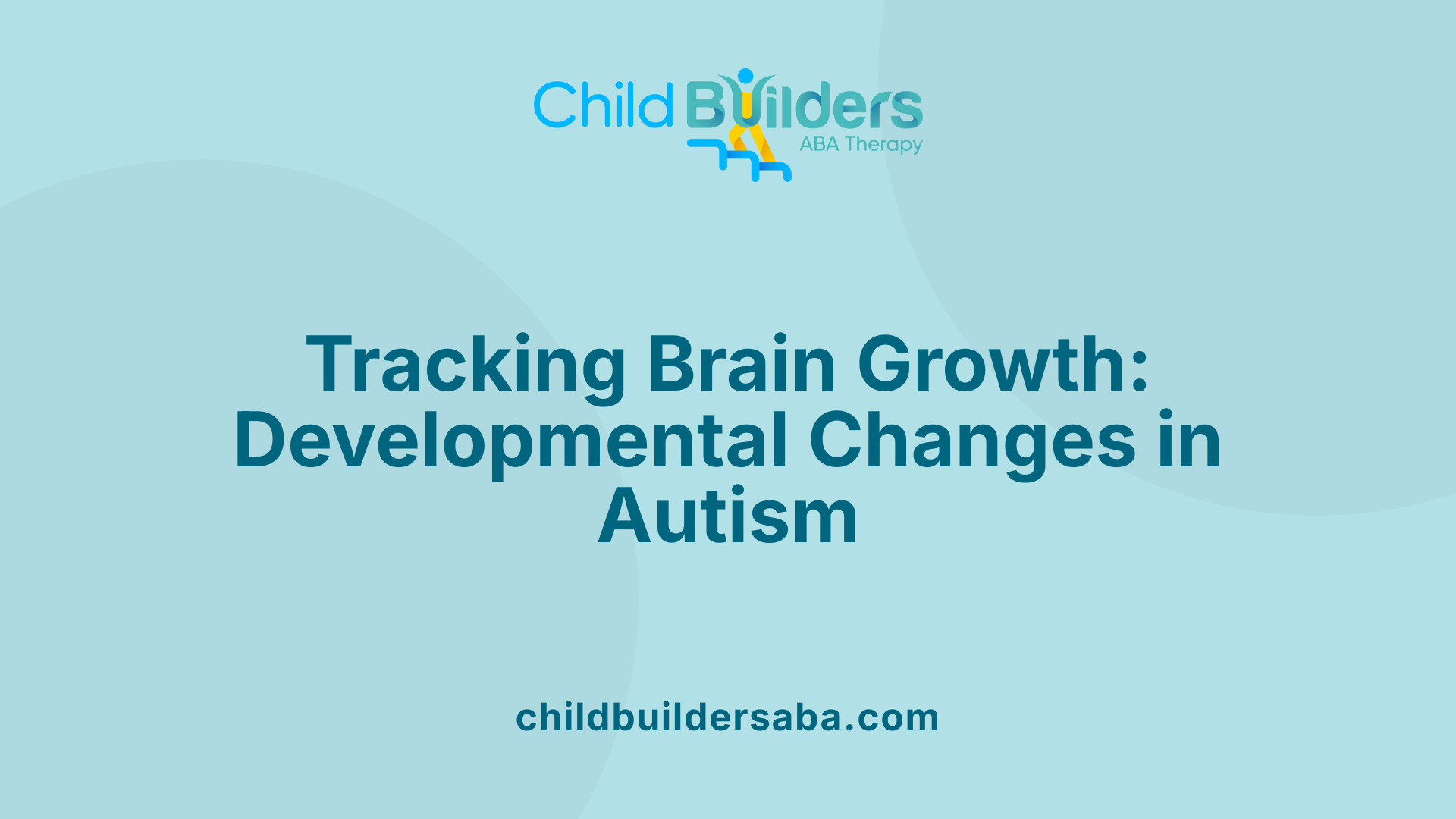
When does the autistic brain stop developing?
Brain development in individuals with autism begins very early, often even before behavioral symptoms become evident. Research shows that as early as 6 months of age, advanced imaging techniques can detect significant structural changes in the autistic brain.
A common characteristic during early development is rapid brain overgrowth. Between approximately 12 to 24 months, many autistic children experience a sharp increase in brain size and surface area, which is considerably faster than typical development.
This accelerated growth phase may involve larger cerebral cortex volume, increased cerebrospinal fluid, and enhanced surface area, contributing to atypical neural circuitry. However, following this period of rapid expansion, some regions may stabilize or even decrease in volume, leading to a plateau or decline in certain structural features during later childhood and adolescence.
White matter development, which involves the neural pathways connecting different brain regions, also varies from typical patterns. In autism, white matter may develop irregularly, impacting the efficiency of neural communication.
As individuals transition into adulthood, some studies indicate that the autism brain begins to shrink prematurely, even before the age of 30. This brain atrophy correlates with some cognitive and behavioral changes seen in adult autism.
Overall, brain growth in autism does not follow a typical timeline and continues to be a prolonged process. Instead of a clear endpoint, it involves ongoing and atypical changes that span from early infancy through early adulthood.
Understanding these developmental patterns is crucial for designing interventions targeted at different stages and for supporting individuals with autism throughout their lifespan.
For further information, search terms like [
Structural Variability and Individual Differences
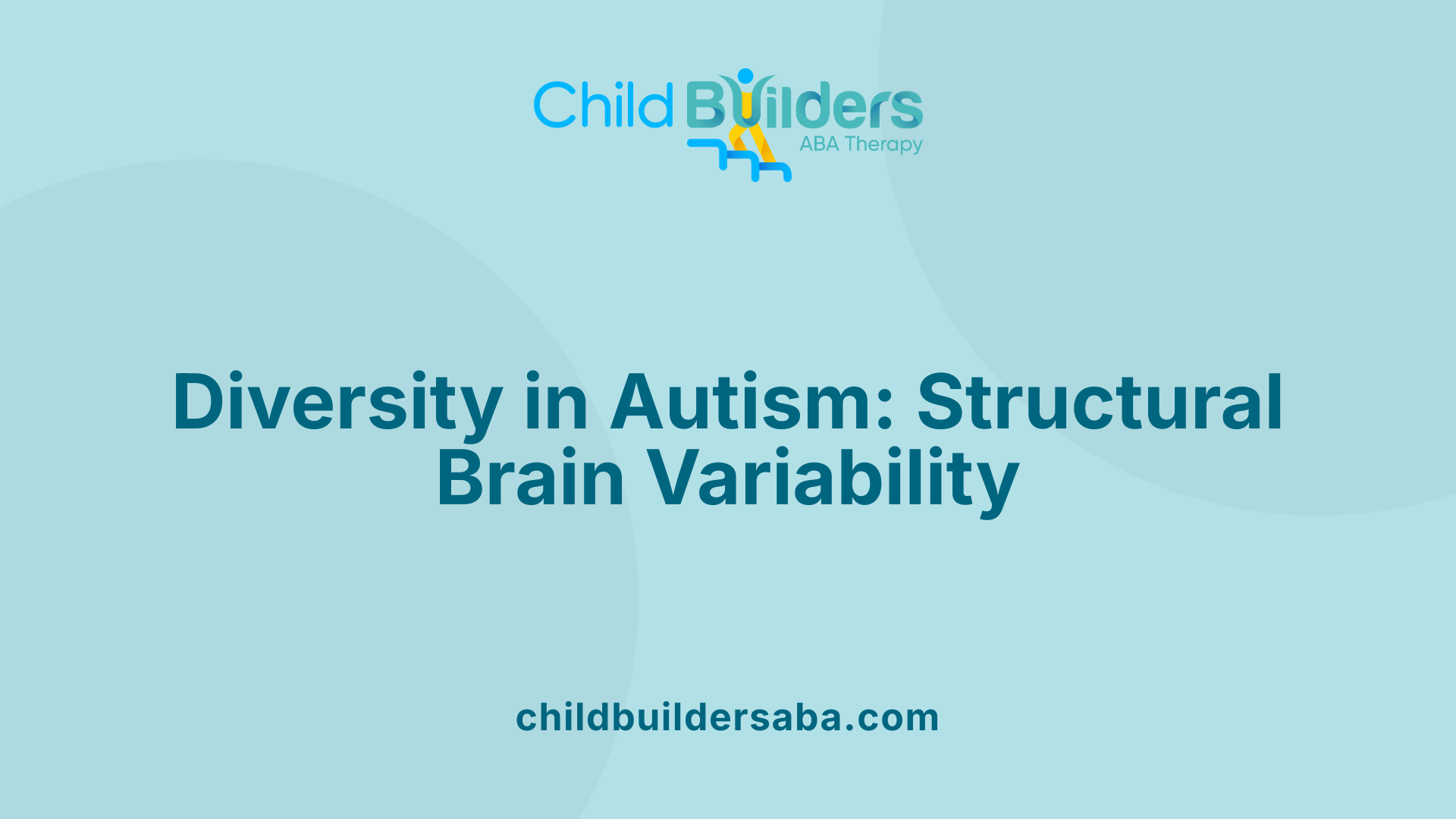
Are the brains of autistic individuals wired differently?
Recent studies confirm that they indeed are. Autistic brains show a complex pattern of wiring differences compared to neurotypical brains. One significant molecular finding is a 17% reduction in synaptic density in autistic adults, directly measured via advanced imaging techniques like PET scans. Fewer synapses can impact neural communication efficiency and are linked to some core autism features, such as social interaction challenges and repetitive behaviors.
Neuroimaging research further highlights that there is no single pattern of brain wiring in autism. Instead, there are diverse connectivity differences. Some regions of the brain display increased connectivity, known as hyperconnectivity, especially in sensory processing areas. Conversely, other regions show decreased connectivity or hypoconnectivity, impacting long-range neural communication.
These variability patterns can change during different developmental stages. For example, early in life, some children exhibit rapid brain overgrowth, while others show structural differences like enlarged hippocampi or smaller corpus callosum, affecting interhemispheric communication. As individuals age, certain brain regions may shrink prematurely, which can influence cognitive and emotional functions.
Differences across ages and sexes
Age plays a significant role in the structural landscape of autistic brains. Infants often display rapid growth in specific areas, like increased cortical surface expansion, which may predispose to autism. In some adult cases, brain tissue volume decreases earlier than usual, raising concerns about accelerated aging.
Sex differences also influence brain structure in autism. For instance, the impact on the amygdala appears more pronounced in girls, and white matter connectivity patterns differ between sexes, suggesting that male and female brains might follow somewhat distinct neurodevelopmental paths.
Size variations in key regions
Certain brain regions show notable size variations. Children with autism often have an enlarged hippocampus during early development, which correlates with memory and social functioning differences. The amygdala, critical for emotional processing, tends to be larger in children with autism but is smaller or shows altered growth patterns in adults.
The cortex exhibits differences in thickness and organization, with some areas showing narrower columns and increased folding, affecting neural network functioning. These physical differences contribute to the diverse cognitive profiles seen in autism, from extraordinary memory skills to challenges with social processing.
Individual neurodevelopmental pathways
Every autistic individual’s brain develops through its unique route. Variations include differences in neural progenitor cell proliferation, synaptic pruning, and connectivity patterns, leading to a spectrum of neuroanatomical configurations. This individual variability underscores why autism manifests differently across people.
Understanding these unique neurodevelopmental pathways emphasizes that autism isn’t a uniform condition but a collection of diverse brain wiring profiles. Recognizing this can improve personalized approaches to diagnosis and intervention, supporting each individual’s strengths and addressing their specific challenges.
Sensory Processing and Cognitive Strengths in Autism
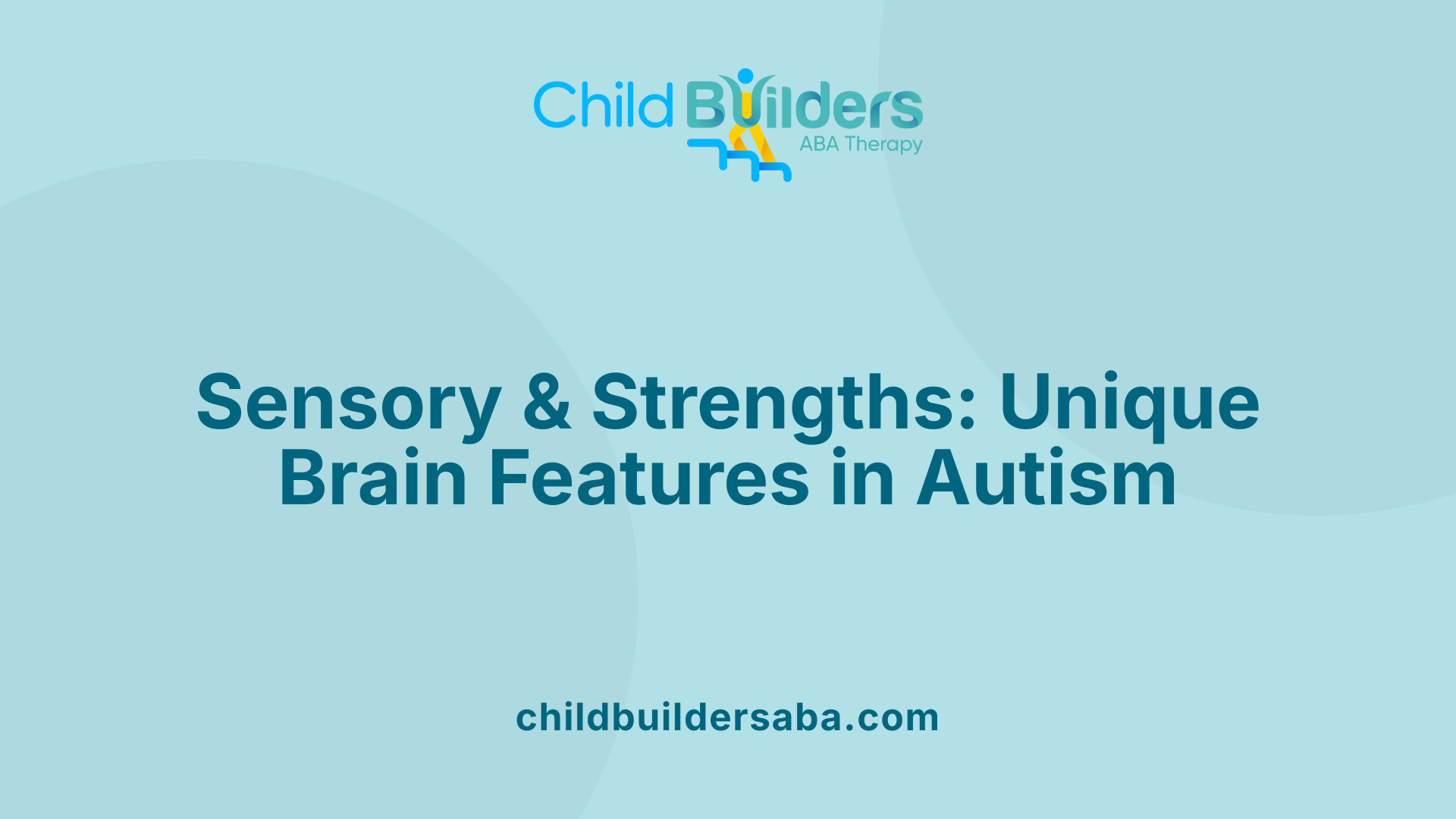
What do MRI scans reveal about autistic versus neurotypical brains?
MRI scans have revealed several structural and microstructural differences between autistic and neurotypical brains. These imaging techniques show variations in brain size, with some parts enlarging in early childhood—particularly the amygdala, which is involved in emotional and social processing. In some cases, children with autism exhibit an enlarged hippocampus during development, though this may not persist into adulthood.
Structural differences also include the thickness and folding of the cerebral cortex, which influence neural connectivity and information processing. Autistic individuals tend to have more folds in certain brain areas, affecting how networks are organized. Additionally, the corpus callosum, the bundle of fibers connecting the brain’s hemispheres, often shows size differences, resulting in altered communication between the sides.
Beyond structural aspects, advanced PET scans have highlighted a 17% reduction in synaptic density in autistic adults. This decrease correlates with core autistic traits, such as social difficulties and repetitive behaviors. White matter abnormalities are also common, including atypical integrity in neural pathways like those in the corpus callosum, which may impact the efficiency of neural signaling.
Taken together, neuroimaging evidence emphasizes that autism involves distinctive patterns of brain development, connectivity, and organization. These differences are diverse and not uniform across all individuals, reflecting the spectrum nature of autism. Understanding these variations helps clarify the biological basis of behaviors and strengths associated with ASD, paving the way for targeted interventions and support strategies.
Implications for Support, Diagnosis, and Lifespan Outcomes
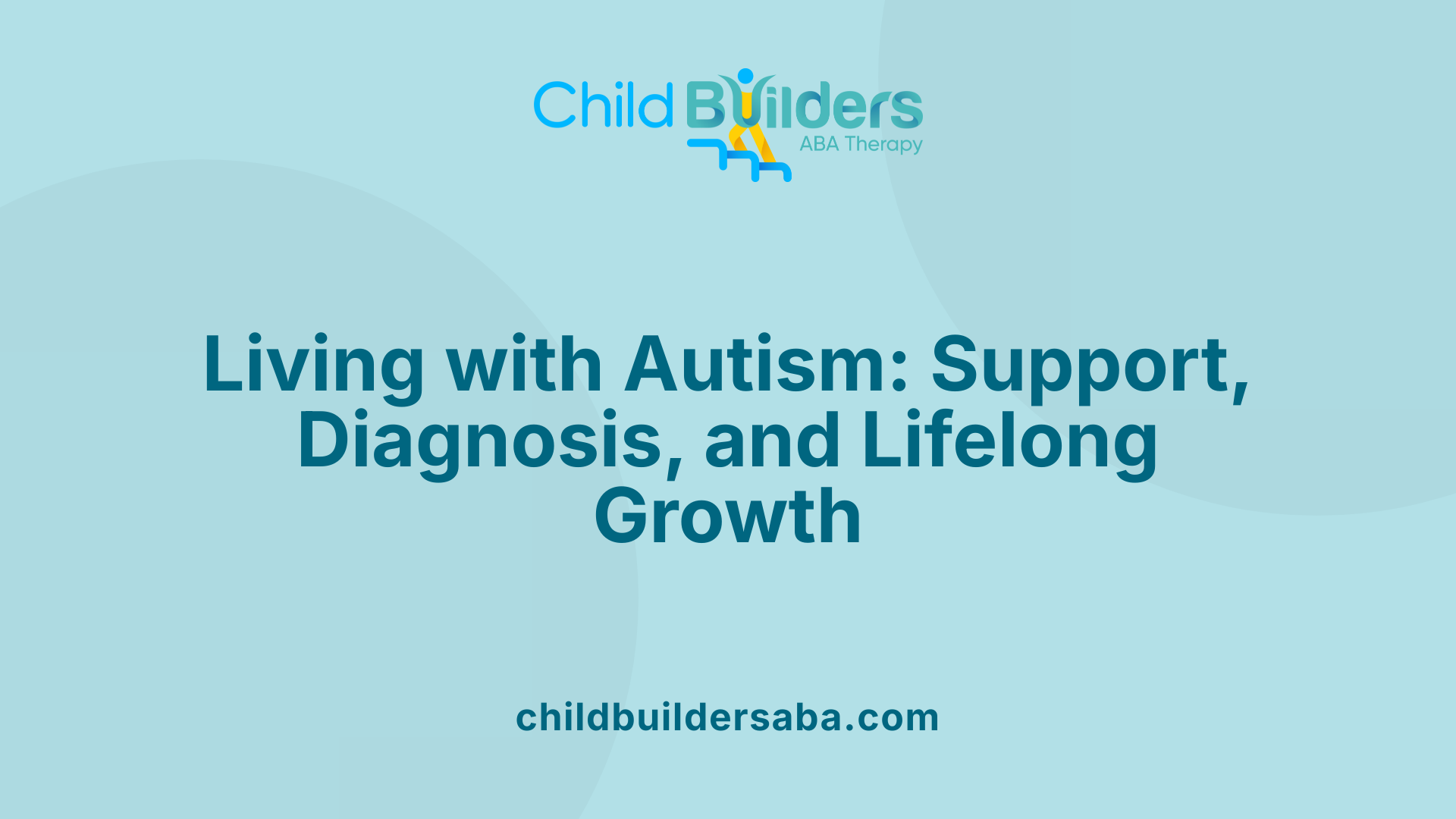
Is it possible to live a 'normal' life with autism?
Yes, many individuals with autism can live fulfilling lives, especially when they receive early diagnosis and tailored support. The brains of autistic individuals are diverse, with unique strengths such as exceptional memory, attention to detail, and problem-solving skills. These qualities, combined with appropriate interventions, enable many to succeed in education, careers, and personal relationships.
Early diagnosis and intervention
Detecting autism early is crucial. Since symptoms often appear in early childhood, behavioral, speech, and occupational therapies can significantly improve social skills, communication, and daily functioning. Early intervention capitalizes on the brain’s neuroplasticity, helping the developing brain form more adaptive neural connections.
Lifelong development and neural plasticity
Autism involves differences in brain development, including altered connectivity and synaptic density. Despite these differences, the brain remains capable of change through experience and support. Support programs help autistic individuals develop skills that increase independence and quality of life across their lifespan.
Impact on life expectancy and quality of life
While autism itself does not reduce life expectancy, associated health issues like epilepsy and other neurological conditions can influence overall health. With access to proper healthcare, education, and social support, many autistic individuals enjoy a high quality of life, participating actively in society.
Living with autism and societal understanding
Acceptance and societal integration are essential. Recognizing neurodiversity helps foster inclusive environments that value different ways of thinking and perceiving the world. This understanding reduces stigma, promotes employment opportunities, and enhances community support networks.
| Aspect | Considerations | Influence on Well-being |
|---|---|---|
| Early diagnosis | Enables prompt support | Improves social and communication skills |
| Lifelong support | Adapts to changing needs | Promotes independence and emotional health |
| Social environment | Acceptance and understanding | Boosts self-esteem and inclusion |
| Medical support | Management of comorbid conditions | Enhances overall health and comfort |
| Educational opportunities | Tailored learning plans | Facilitates skill development |
The public understanding of autism continues to grow, emphasizing the importance of supportive environments that celebrate neurodiversity. With appropriate resources and societal acceptance, autistic individuals can lead meaningful, productive lives.
Embracing Neurodiversity and Future Perspectives
Understanding how autistic brains work not only enhances our scientific knowledge but also promotes acceptance and tailored support. Recognizing the unique neural configurations and strengths of autistic individuals encourages a more inclusive society that values neurodiversity. Continued research into brain development, connectivity, and molecular biology fosters hope for more effective interventions and improved quality of life for autistic people at every stage. Embracing the brain’s diversity is key to unlocking potential and creating a world where differences are celebrated as natural human variations.
References
- Autism Spectrum Disorder: Autistic Brains vs Non ... - HealthCentral
- A Key Brain Difference Linked to Autism Is Found for the First Time ...
- Information processing differences - Autism Understood
- Brain structure changes in autism, explained | The Transmitter
- How Does the 'Autistic Brain' Work? - Autism Parenting Magazine
- Autism Spectrum Disorder (ASD) Symptoms & Causes
- Understanding the Autism Brain - info for parents and teachers



.jpg)

































































































